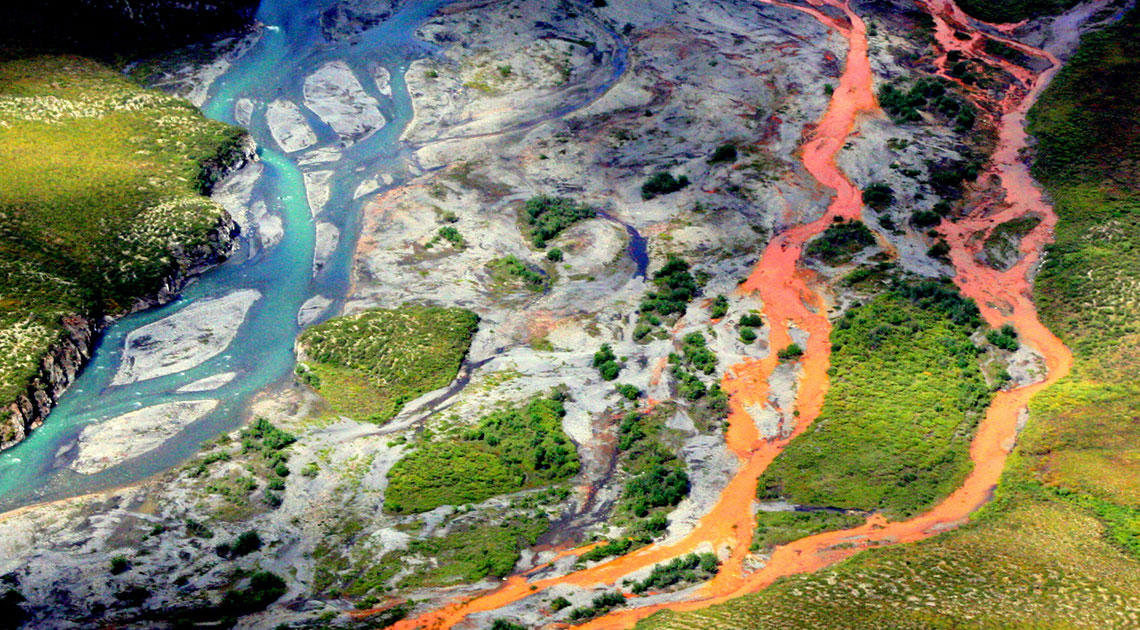
The unusual color comes from minerals released from frozen soil as it thawsUCD
The once crystal blue waters of dozens of rivers across remote Alaska have turned a murky orange. A team from the National Park Service, US Geological Survey, and the University of California, Davis, identified the phenomenon in 75 rivers located in federal conservation areas accessible only by helicopter. One theory is that the change is caused by minerals being released from thawing permafrost — a layer of soil that remains frozen for a long period. “There are certain sites that look almost like a milky orange juice,” said SNP ecologist Jon O’Donnell in a UCD statement. The color reminded UCD’s Brett Poulin of acid mine drainage, although there are no mines near these rivers. Some of the sampled water showed an acidic pH and high levels of iron, zinc, nickel, copper, and cadmium. Acidification can make water corrosive, harming fish and preventing them from migrating to spawning grounds (Nature Communications: Earth and Environment; UCD Newsletter, May 20).
Republish